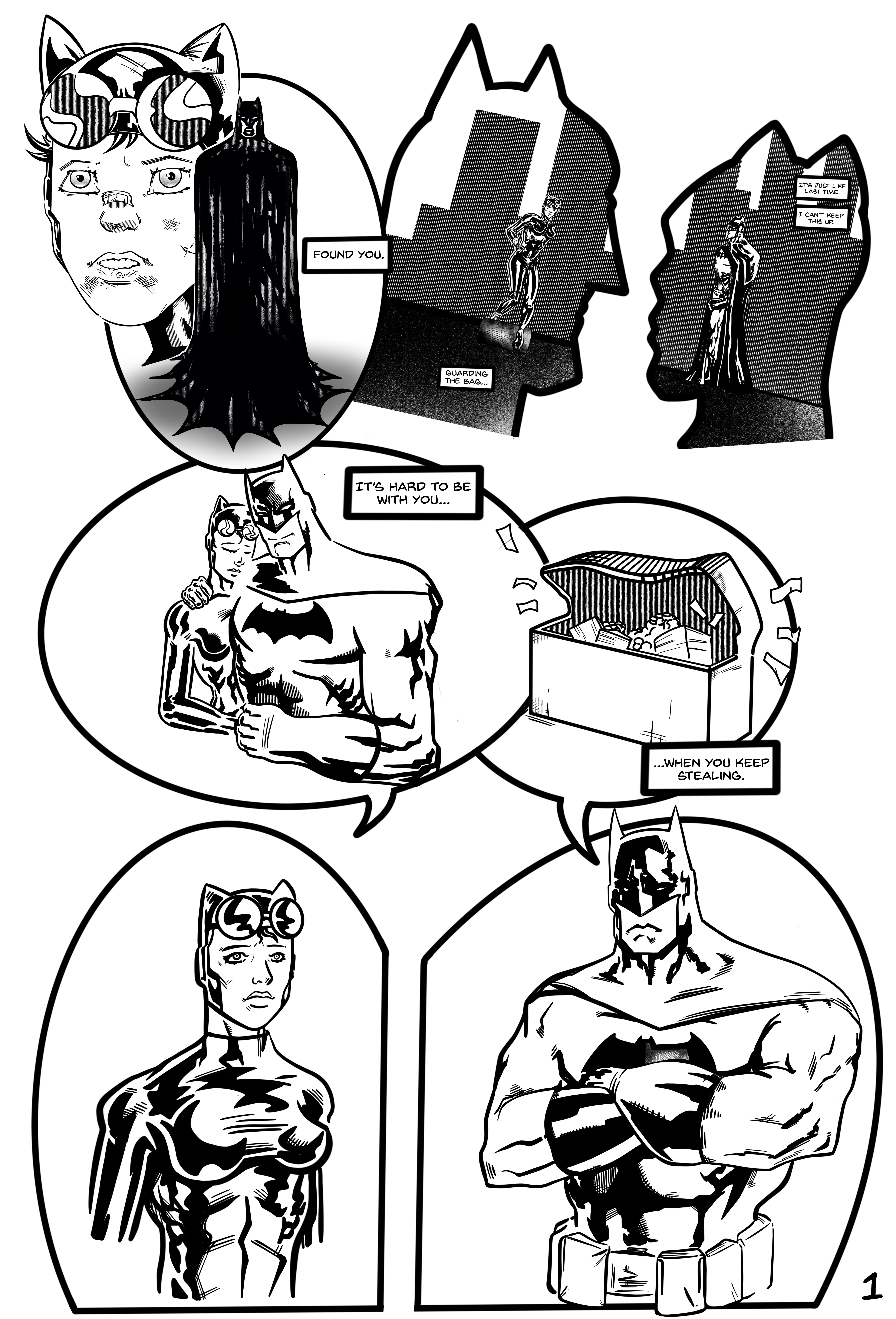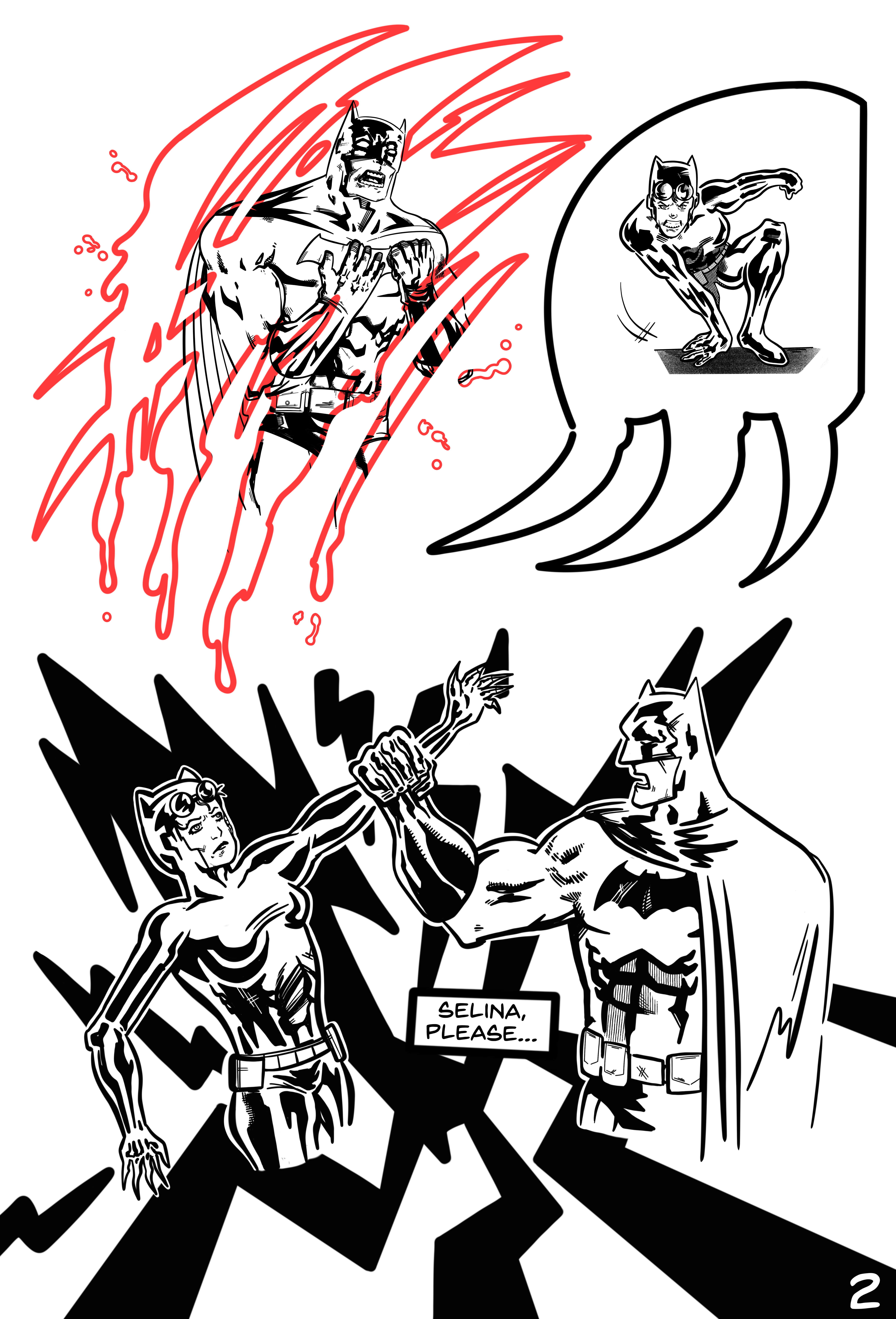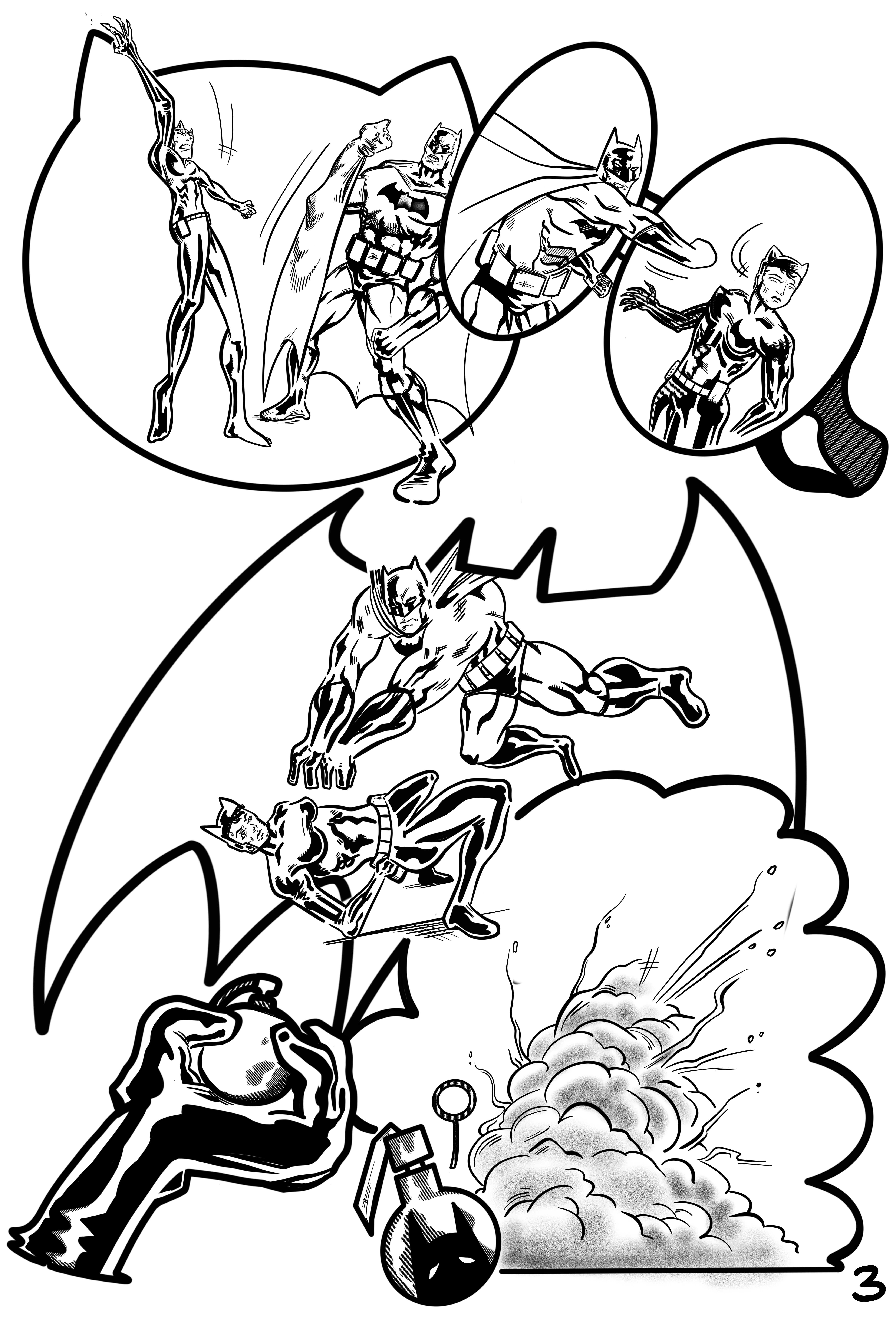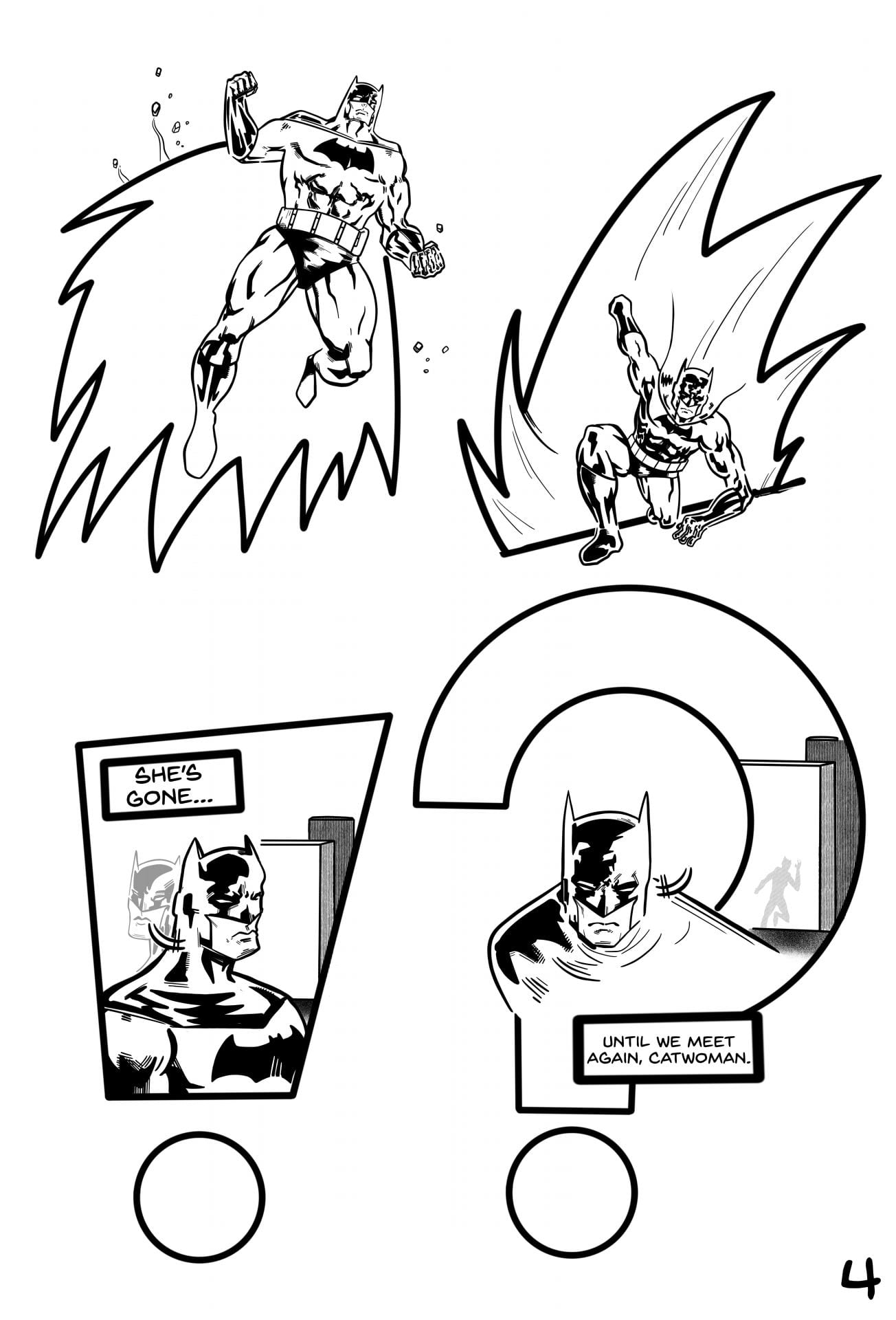



The Dynamism of Panels
Throughout our 10-week analysis of comic components and concepts, we, as a class, have heavily familiarized ourselves with what is accomplished within and in-between panels. Because of this, a concept I felt required more attention was what can be conveyed and achieved by varying the shapes and sizes of panels themselves. Many artists we’ve studied have employed variation in panel size, but in each instance, there has always been some form of the “democratic” panel or grid. That is to say, we have yet to observe a complete absence of a “square” or “rectangular” panel; even Swamp Thing Annual contained recurring rectangular layouts, despite its relative deviance from the democratic grid. Inspired by a two-panel sequence in Spectacular Spiderman #100 , I set out to stray as far as I could from the traditional
“box” that we commonly associate with a panel border. Specifically, I wanted to test the theory that dynamic, symbolic panel shapes could provide more plastic content for readers, representing layered meaning more efficiently.
To accomplish this task, I first drafted my pages to include sequences where panels complemented each other as counterparts. Each page contains at least one of these pairs, with the assumption that readers treat them as layered panels. Two meanings can be constructed in each sequence: one from the literal actions taking place within the panels and one conveyed through the outlines of specific panels as objects or symbols. One of the first sequences of the comic, the Batman/Catwoman rooftop standoff, exemplifies this superimposition of metaphorical and literal meaning. The splitting of panels and the stances of the characters can be interpreted as a tense faceoff between two adversaries. But on a panel level, Batman is “contained” within Catwoman’s silhouette (and vice-versa), representing the idea that both characters are not just physically “in each other’s heads”, they are simultaneously thinking of one another.
Another way the unusual panel shapes affect the reading of the comic is through their own sequential dynamism and their contributions to page iconostasis, which assist in representing specific turning points in the narrative. Notably, the two panels on page 3, shaped as Catwoman’s head and as her goggles, represent two distinct actions. One is a fight transition—which is shown within the panels and exaggerated by the flipping of the character positions between panels. This intra-panel sequential dynamism is also found in the knocking off of Catwoman’s goggles that occurs in the panel outlines. The events are connected, yet they occur on top of one another, further creating depth.
This ties into some of the unpaired panel shapes, which are expressive in their ability to guide readers through each page. Panels 1 and 2 on page 2 are shaped so that they point towards succeeding panels: the slash marks point to the following panel, the claws of which are positioned towards the panel sequence after it. In a comic founded upon deviation from traditional panel standards, this helps maintain direction and prevent confusion. Furthermore, the panels on page 3 are hierarchical and display a progressive increase in importance; each panel overlaps as the action comes to a peak with Catwoman’s bomb exploding. My intentions with this pattern were to show actions building on one another as they reach a climax. Contextually, Catwoman is losing the fight she picked, and as a result, she becomes more
desperate, to the point that she must use what she’s carrying to escape being sent to Arkham Asylum.
Interestingly, the concept of time feels somewhat skewed by the panel shapes. With panels shaped to direct readers through the page, readers are more inclined to make quicker transitions than they may when approaching traditional grids. While the types of panel transitions vary across the board, the whole comic feels very “moment-to-moment.” I actually believe this adds a more cinematic feel to the composition because the panels are less restrictive and confining of their subjects.
By most metrics, I’m satisfied with the final composition, and I think that I successfully demonstrated that completely symbolic panels have the ability to build upon events taking place within them. In hindsight, however, I don’t believe the superhero genre was the most appropriate for such a demonstration. This is due to the tendency for readers to focus on the art
and narrative rather than search for meaning beyond them. Specifically, I think that framing a fight scene in symbolic panels was slightly distracting, as the action was “interrupted” by a forced, unconventional reading of action sequences. Thinking back to comics like This One Summer and On A Sunbeam , the focus on character more than action aided my ability to more
deeply analyze them.
In the end, my attempts to disrupt conventional panel shapes to communicate more plastic content for readers proved to be an interesting experiment demonstrating a potential new way to create comics that involves the representative, symbolic function of panels themselves.
©2020 Samuel Miller
